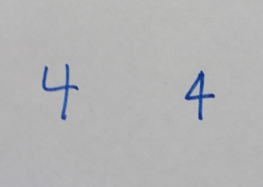|
Stolen (2024 Film)
''Stolen'' () is a Swedish drama film directed by in her feature directorial debut, based on the 2021 novel of the same name by Ann-Helén Laestadius. It was released on Netflix on 12 April 2024. Premise Nine-year-old Elsa, a Sámi girl, witnesses her reindeer, Nastegallu, being poached and is frightened into silence. Ten years later, she vows revenge against the poacher. Cast * as Elsa Stuorbma ** Risten Alida Siri-Skum as young Elsa * Martin Wallström as Robert Isaksson, the man who targets the Sámi’s herd of reindeer * Lars-Ánte Wasara as Mattias, Elsa's brother ** Nilsa Aleksander Nutti as young Mattias * Magnus Kuhmunen as Nils-Johan, Elsa’s father * Ánne Lájlá Westerfjell Kalstad as Marika, Elsa’s mother * Inger Gunhild Maria Tapio as Áhkku, Elsa’s grandmother * as Lasse, Elsa’s family friend * Niilá Emanuel Omma as Niila Heatta, Elsa’s love interest * Ida Persson Labba as Anna-Stina, Elsa’s friend ** Ellá Márge Nutti as young Anna-Stina * Mati ... [...More Info...] [...Related Items...] OR: [Wikipedia] [Google] [Baidu] |
Netflix
Netflix is an American subscription video on-demand over-the-top streaming service. The service primarily distributes original and acquired films and television shows from various genres, and it is available internationally in multiple languages. Launched in 2007, nearly a decade after Netflix, Inc. began its pioneering DVD-by-mail movie rental service, Netflix is the most-subscribed video on demand streaming media service, with 301.6 million paid memberships in more than 190 countries as of 2025. By 2022, "Netflix Original" productions accounted for half of its library in the United States and the namesake company had ventured into other categories, such as video game publishing of mobile games through its flagship service. As of 2025, Netflix is the 18th most-visited website in the world, with 21.18% of its traffic coming from the United States, followed by the United Kingdom at 6.01%, Canada at 4.94%, and Brazil at 4.24%. History Launch as a mail-based renta ... [...More Info...] [...Related Items...] OR: [Wikipedia] [Google] [Baidu] |
Norrbotten County
Norrbotten County (, Meänkieli/, ) is the northernmost county or '' län'' of Sweden. It is also the largest county by land area, almost a quarter of Sweden's total area. It shares borders with Västerbotten County to the southwest, the Gulf of Bothnia to the southeast, the counties of Nordland and Troms in Norway to the northwest, and Lapland Province in Finland to the northeast. The name "Norrbotten" is also used for a province of the same name. Norrbotten province covers only the eastern part of Norrbotten County – the inland mostly belongs to the Swedish Lapland province (''Lappland''). The capital of Norrbotten is Luleå. Other significant towns include Boden, Kiruna and Piteå. The majority of the population lives in the namesake province, whereas the Lapland part of the county is sparsely populated. Norrbotten covers a larger land area than both Austria and Portugal. The four largest municipalities in Sweden by land area are in the county. Sweden's tallest ... [...More Info...] [...Related Items...] OR: [Wikipedia] [Google] [Baidu] |
Films Based On Swedish Novels
A film, also known as a movie or motion picture, is a work of visual art that simulates experiences and otherwise communicates ideas, stories, perceptions, emotions, or atmosphere through the use of moving images that are generally, since the 1930s, synchronized with sound and (less commonly) other sensory stimulations. Etymology and alternative terms The name "film" originally referred to the thin layer of photochemical emulsion on the celluloid strip that used to be the actual medium for recording and displaying motion pictures. Many other terms exist for an individual motion-picture, including "picture", "picture show", "moving picture", "photoplay", and "flick". The most common term in the United States is "movie", while in Europe, "film" is preferred. Archaic terms include "animated pictures" and "animated photography". "Flick" is, in general a slang term, first recorded in 1926. It originates in the verb flicker, owing to the flickering appearance of early films. ... [...More Info...] [...Related Items...] OR: [Wikipedia] [Google] [Baidu] |
Indigenous Films
Indigenous may refer to: *Indigenous peoples *Indigenous (ecology), presence in a region as the result of only natural processes, with no human intervention *Indigenous (band), an American blues-rock band *Indigenous (horse), a Hong Kong racehorse * ''Indigenous'' (film), Australian, 2016 See also *Indigenous Australians *Indigenous language *Indigenous peoples in Canada *Indigenous religion *Missing and Murdered Indigenous Women Missing and Murdered Indigenous Women are instances of violence against Indigenous women in Canada and the United States, notably those in the First Nations in Canada and Native American communities, but also amongst other Indigenous peoples s ... * Native (other) * * {{disambiguation ... [...More Info...] [...Related Items...] OR: [Wikipedia] [Google] [Baidu] |
2024 Thriller Films
4 (four) is a number, numeral and digit. It is the natural number following 3 and preceding 5. It is a square number, the smallest semiprime and composite number, and is considered unlucky in many East Asian cultures. Evolution of the Hindu-Arabic digit Brahmic numerals represented 1, 2, and 3 with as many lines. 4 was simplified by joining its four lines into a cross that looks like the modern plus sign. The Shunga would add a horizontal line on top of the digit, and the Kshatrapa and Pallava evolved the digit to a point where the speed of writing was a secondary concern. The Arabs' 4 still had the early concept of the cross, but for the sake of efficiency, was made in one stroke by connecting the "western" end to the "northern" end; the "eastern" end was finished off with a curve. The Europeans dropped the finishing curve and gradually made the digit less cursive, ending up with a digit very close to the original Brahmin cross. While the shape of the character fo ... [...More Info...] [...Related Items...] OR: [Wikipedia] [Google] [Baidu] |
2020s Swedish-language Films
S, or s, is the nineteenth letter of the Latin alphabet, used in the English alphabet, the alphabets of other western European languages and other latin alphabets worldwide. Its name in English is ''ess'' (pronounced ), plural ''esses''. History Northwest Semitic šîn represented a voiceless postalveolar fricative (as in 'ip'). It originated most likely as a pictogram of a tooth () and represented the phoneme via the acrophonic principle. Ancient Greek did not have a "sh" phoneme, so the derived Greek letter Sigma () came to represent the voiceless alveolar sibilant . While the letter shape Σ continues Phoenician ''šîn'', its name ''sigma'' is taken from the letter ''Samekh'', while the shape and position of ''samekh'' but name of ''šîn'' is continued in the '' xi''. Within Greek, the name of ''sigma'' was influenced by its association with the Greek word (earlier ), "to hiss". The original name of the letter "Sigma" may have been ''san'', but due to the ear ... [...More Info...] [...Related Items...] OR: [Wikipedia] [Google] [Baidu] |
2024 Films
4 (four) is a number, numeral and digit. It is the natural number following 3 and preceding 5. It is a square number, the smallest semiprime and composite number, and is considered unlucky in many East Asian cultures. Evolution of the Hindu-Arabic digit Brahmic numerals represented 1, 2, and 3 with as many lines. 4 was simplified by joining its four lines into a cross that looks like the modern plus sign. The Shunga would add a horizontal line on top of the digit, and the Kshatrapa and Pallava evolved the digit to a point where the speed of writing was a secondary concern. The Arabs' 4 still had the early concept of the cross, but for the sake of efficiency, was made in one stroke by connecting the "western" end to the "northern" end; the "eastern" end was finished off with a curve. The Europeans dropped the finishing curve and gradually made the digit less cursive, ending up with a digit very close to the original Brahmin cross. While the shape of the character ... [...More Info...] [...Related Items...] OR: [Wikipedia] [Google] [Baidu] |




